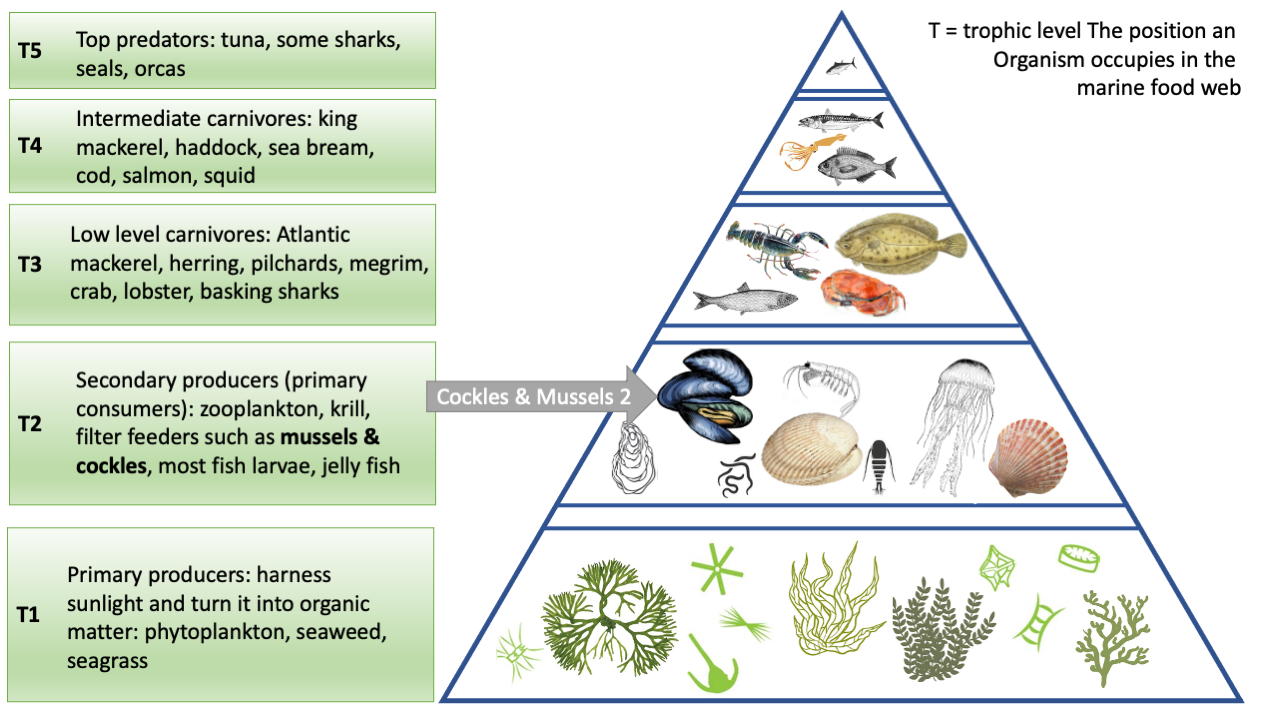Sustainability of Mussels in Ireland
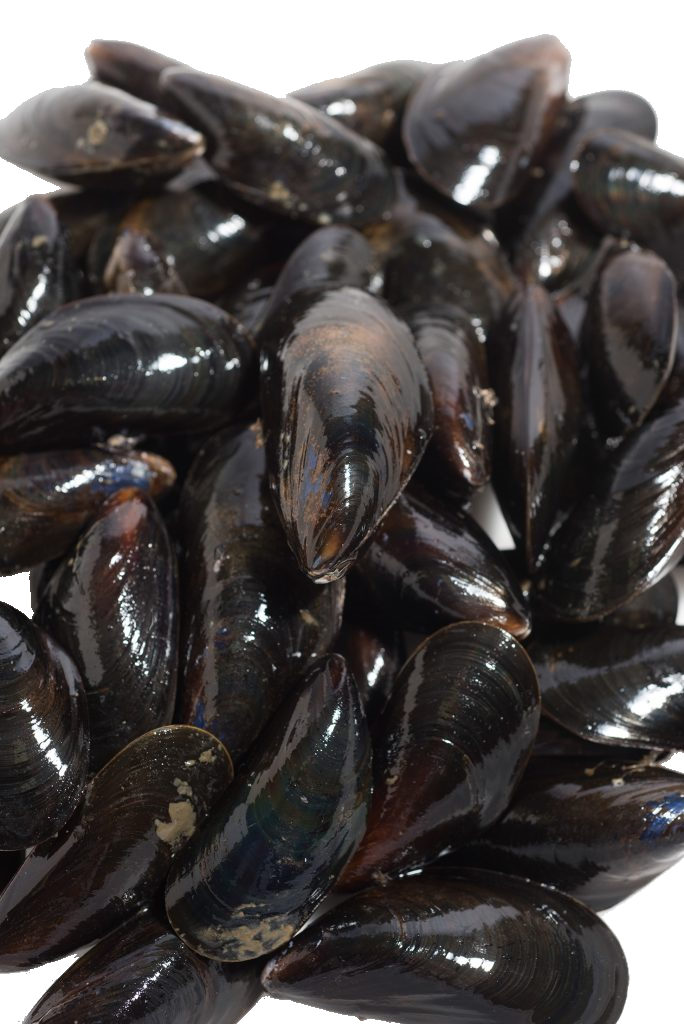 click here to jump to the sustainability of cockles
click here to jump to the sustainability of cockles
- Sustainability rating mussels: 1
- MSC certified mussels: Irish bottom and rope grown mussels
- Recommended minimum size: 45 - 50mm
- Season: avoid during spawning season May - August
- Fishing method: mostly aquaculture, bottom grown mussels are harvested by dredge
The mussel industry in Ireland is the largest aquaculture sector in terms of tonnage and third only to salmon and oysters in terms of value. Ireland specialises in two main production techniques, bottom mussels and rope mussels.
While the Irish bottom grown mussel fishery achieved its MSC certification in 2013, the Irish rope grown mussels were MSC certified as recent as 2019.

These are good news, as it allows for a unique national approach where all mussel growers operating in licensed harvest locations in Ireland can label their mussels with the MSC ecolabel, showing that they are MSC certified as sustainable and from a well-managed fishery. Ireland’s mussel industry is export focussed and MSC certification of Irish bottom and rope grown mussels provides valuable evidence to the marketplace of the sustainable environment in which Ireland’s seafood is produced. The recognition by the MSC proves that Irish mussels are produced to the highest standard.
In 2019 the average number of mussel purchase was 2.7 tonnes which was a 13% increase from 2018 and a 22% increase from 2018 in price. 10,400 tonnes of Irish mussels were exported with a value of €16M.

Rope grown mussels
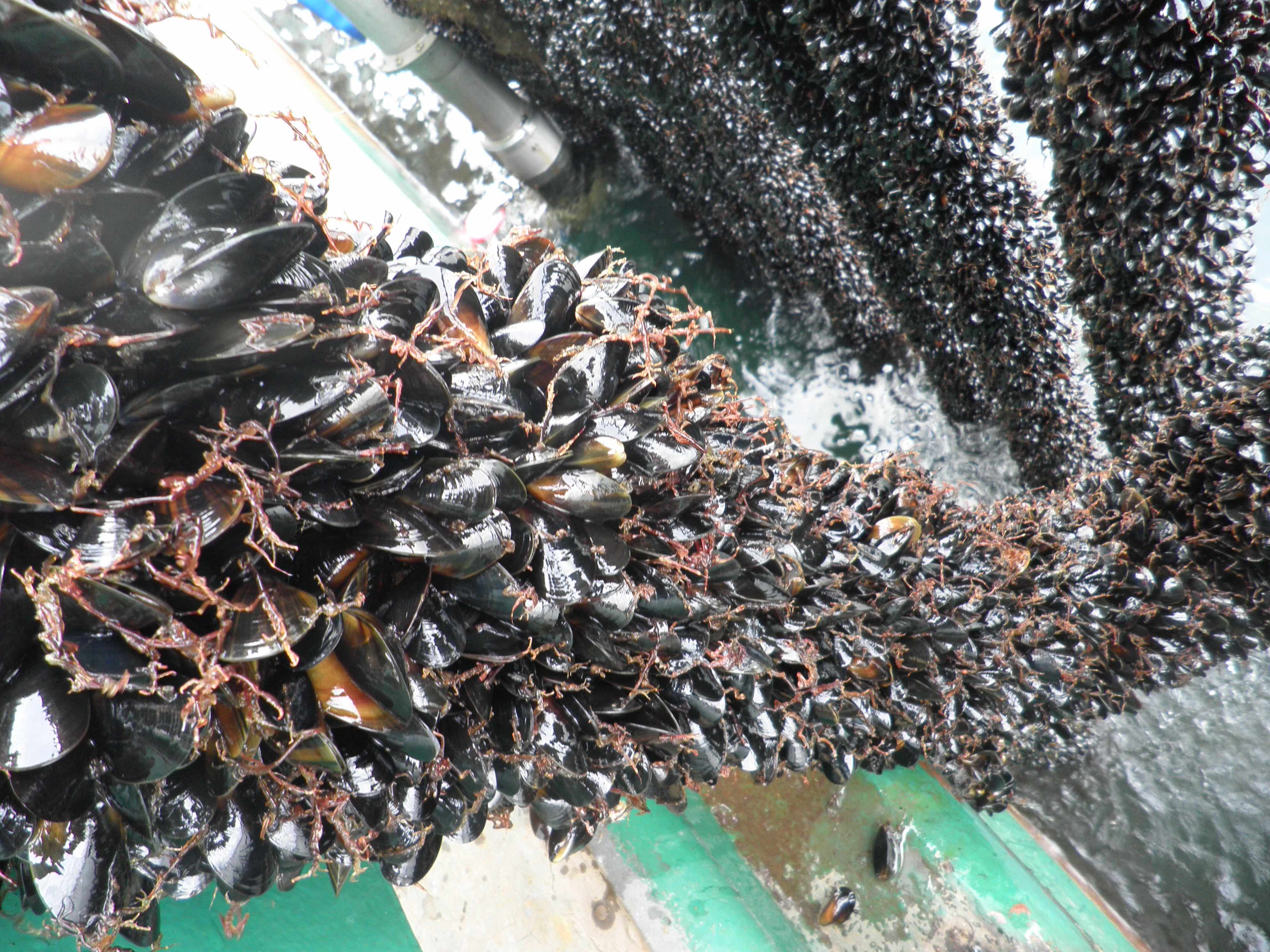
Blue mussels (Mytilus edulis) farmed in Ireland in suspended rope culture and bottom culture have little environmental impact and do not require any commercial feed sources as they get all of their nutrient requirements from the surrounding water – they are filter feeders. Mussel aquaculture is entirely sea-based and habitat concerns are minimal. Recent mussel culture generally does not involve the use of chemicals and there is no concern about the impact of effluents. Spat (mussel seeds) used for farming are either collected from the wild or settle naturally. Research into development of a hatchery is ongoing in several locations. At present, the cultivation of mussels does not rely on hatchery production of seed as wild spatfalls are usually of sufficient quality and reliability and are not overexploited.
Aquaculture systems that are open to the environment tend to pose a risk for disease and parasite interaction with wild populations. However, only a few mass mortality events have been described for adult blue mussels and good management practices ensure that the risk is low and does not threaten regional level populations.
You can get both certified (MSC) and uncertified mussels in your local fishmonger and all of them are sustainably harvested. Rope grown mussels are as sustainable as it gets and you can enjoy this tasty seafood guilt-free!
Bottom mussel fishery
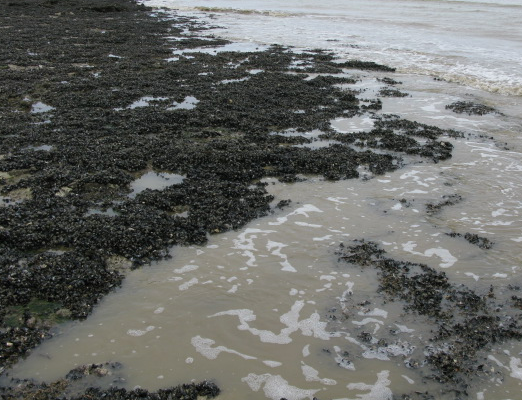 As said earlier, Ireland's bottom grown mussel fishery became MSC certified in 2013, together with its Northern Ireland counterpart. The mussel fishery includes both mussel seed or 'spat' collection and the eventual re-laying and on-growing that takes place in many loughs and bays all around Ireland.
As said earlier, Ireland's bottom grown mussel fishery became MSC certified in 2013, together with its Northern Ireland counterpart. The mussel fishery includes both mussel seed or 'spat' collection and the eventual re-laying and on-growing that takes place in many loughs and bays all around Ireland.
Seed collection usually takes place in autumn in the Irish Sea mainly off Wicklow and Wexford and requires an authorization. Quota is allocated to individual vessels which are generally over 18m in length and fish light weight 2m wide mussel dredges. Gear is designed to skim the upper layer of mud around aggregations of juvenile mussels with minimal impact to the underlying seabed. Seed are re-laid into areas with aquaculture licence for on growing of bottom cultured mussel.
Harvest strategies are based on the assumption that seed mussel beds are short-lived and are not required to maintain reproductive capacity. Therefore, harvest rates may be 100%.
Settlement of spat varies annually and may primarily be driven by environmental conditions during larval development, larval competency, availability of suitable substrate and post settlement survival. There seems to be one single stock of Mytilus edulis in the south Irish Sea while a different stock is observed in inner Dingle Bay.
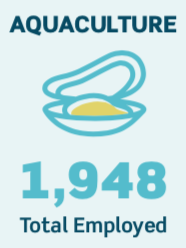
Records show that landings have declined in recent years compared to historic highs. However, bottom grown mussels are still a key contributor to the island’s fisheries sector. As well as having high export volume and value, mussel harvesting provides employment for appox. 700 people across Ireland.
If you’re interested in reading more about the Irish mussel fishery, a consultation document on the fishery Natura Plan for Irish Sea Mussel Seed fishery is available here complete with an assessment conducted by the Marine Institute.
Bouchet method
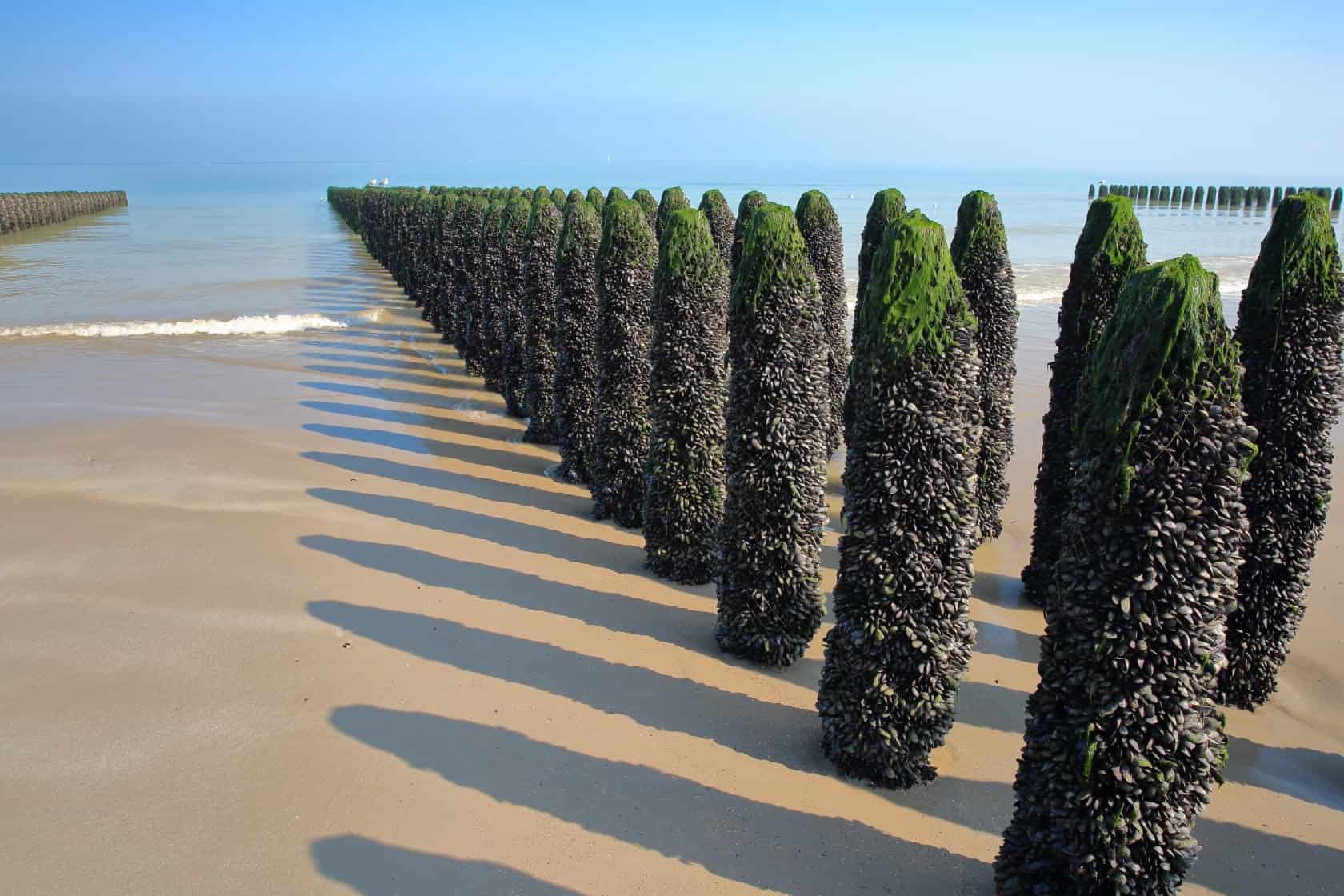
There is a third method of mussel growing that is not practised in Ireland, but since it is the oldest method of them all and since it was invented by an Irishman in France, we tell you a bit about this method, too. This method of growing and harvesting mussels is called Bouchet (read more on this in the history of Irish Mussels) where mussels are grown on poles drilled deep into muddy shorelines. This is the predominant method practised in France.
One thing that unites all three techniques of mussel farming is the necessity for ongoing maintenance. Regardless of the mussel farming methods, providing protection against predators and fouling is essential and key to a successful harvest.
Alternatives and Shellfish poisoning
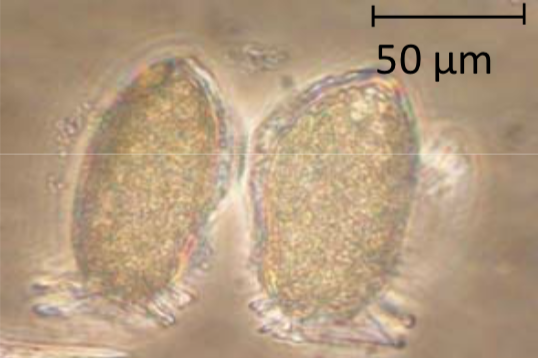
If you can’t get hold of our local blue mussel (Mytilus edulis), you can buy Chilean mussels (Mytilus chilensis) which are also at sustainability rating 1, especially when ASC certified. However, since these mussels are grown mainly in aquacultures in Chile, the transport fuel consumption is a factor increasing the carbon footprint of your purchase. So, we recommend that you try to get the local mussels if you want to have a clear consciences.
This should be easy, because they really are quite abundant. Eat them in the months with an “R” - this has much more to do with them spawning from May to August than them being prone to shellfish poisoning due to toxic phytoplankton in the water, although the risk of this is higher in the summer months.
Generally, there’s no grounds to fear shellfish poisoning when consuming farmed mussels, because each farm around Ireland and the UK is closely monitored by a Food Standard Agency programme that is very efficient and effective, taking immediate and appropriate measures when detecting toxic phytoplankton levels in the water or indeed in the mussels themselves.
The Marine Institute in Oranmore, Galway carries out all the necessary biotoxin testing that ensure safe consumption of mussels Visit their live data website for more information.
The image below shows the production cycle of mussel farming.
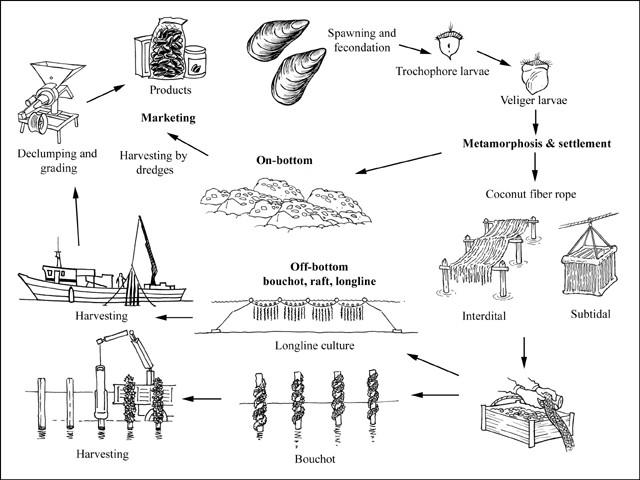
Sustainability of Cockles in Ireland
click here to jump to the sustainability of mussels- Sustainability rating cockles: 2-3
- Recommended minimum size: 17-22mm
- Season: avoid during spawning season April - August
- Fishing method: hand and rake, hydraulic dredging
Cockles aren’t harvested as sustainably as the blue mussel. They’re also not as readily available or affordable (approx. €13/kg) as mussels (approx. €5/kg). Your local fishmonger would often have clams or surf clams for sale instead of the traditional cockles, even though Ireland is one of the main commercial cockle fisheries in the world among Spain, Portugal, France and the UK. However, the fishery is export focused.

Cockle Fishery Management
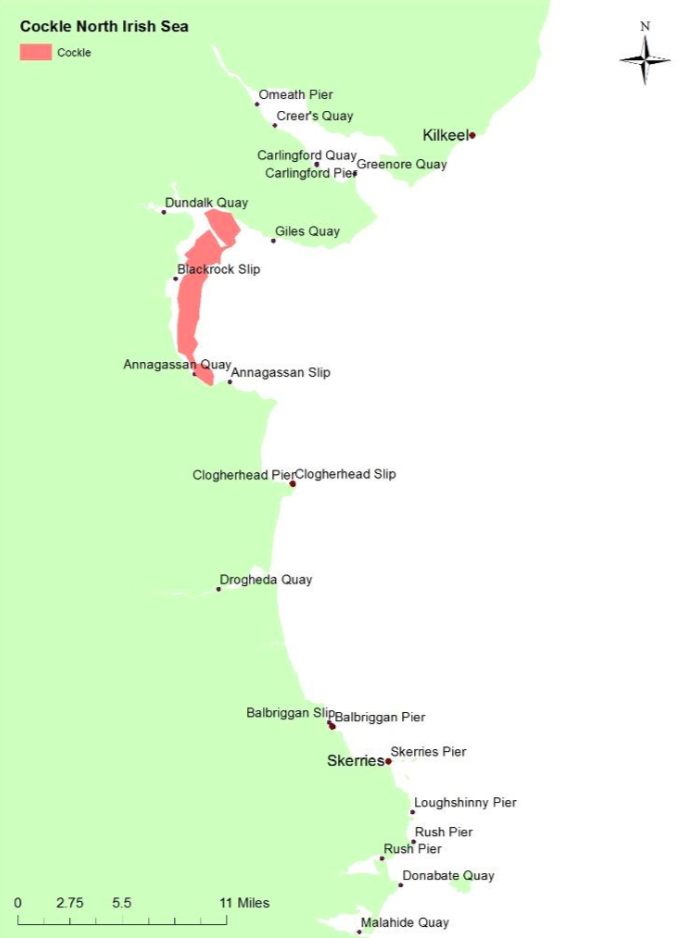
In 2019, 900 tonnes of cockles and clams (evaluated together in BIM statistics) worth €4M were exported.
The cockle fishing hotspots occur in Dundalk Bay (which has the largest cockle beds), Carlingford, Waterford and Tramore – these are all areas of special conservation and or special protected areas. But cockles are non-quota species and have therefore no protection. However, the stock is annually assessed and trends in other ecosystem indicators (benthic habitats, bird populations) are integrated into management advice.
The total allowable catch (TAC) is 33% of total biomass on condition that ecosystem indicators for designated habitats and bird populations are stable.
The fishery closes if the average catch per boat per day declines to 250 kg even if the TAC is not taken (which happens frequently). This and other strict measures (such as fishing hours, max. landings per vessel, etc.) provide additional precaution given uncertainty in the survey estimates.
Dundalk Bay is under a Natura 2000 (put in hyperlink to Natura 2000) site management regime and a fishery natura plan for cockles. Cockles are not only a characterising species of designated habitats within these sites and also an important food source for overwintering birds. Management of cockle fisheries takes into account the conservation objectives for these habitats and species.
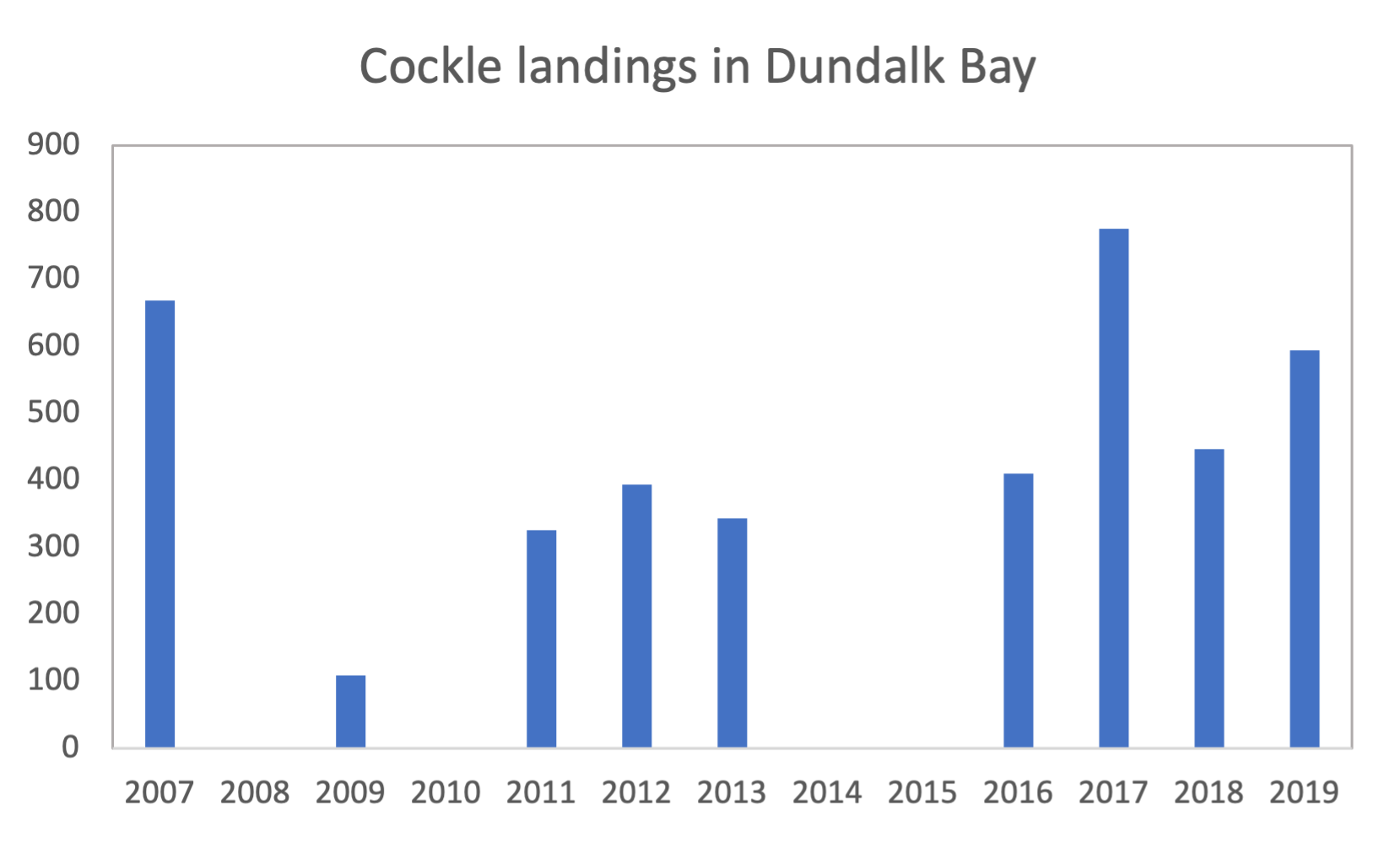
Continuing commercial fisheries for cockles in Natura 2000 sites will depend on favourable conservation status of designated environmental features that may be affected by this fishing activity or a clear demonstration that changes to designated features are not due to cockle fishing.
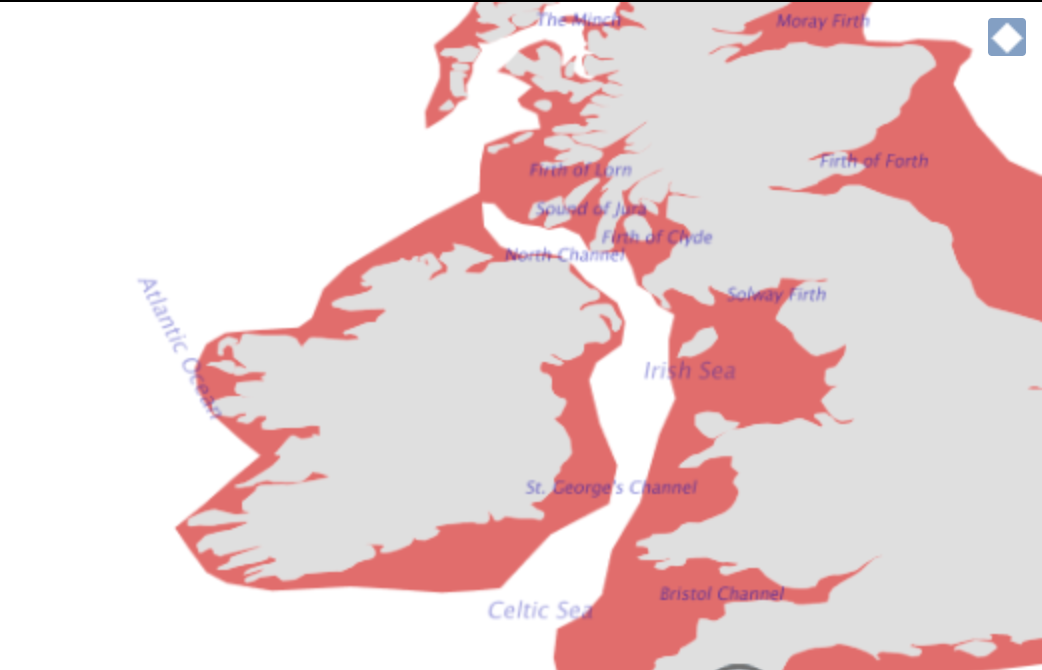
Harvesting methods
The traditional method to harvest cockles is by hand and rakes at low tide which doesn’t have much environmental impact and indeed is a sustainable method (sustainability rating 2), however it is labour intense.
Therefore, hydraulic suction and dredging were introduced in the 1970s. These methods fluidise the seabed to the depth of the target species, which means that effectively much of the substrate and its constituents is entirely removed or relocated. This is very damaging not only to the soft bodied organisms that live in the sediment and die from such activities, but also to juvenile cockles through serial discarding and the destruction of infauna which disrupts natural sedimentary processes. Researchers from the University College Cork (UCC) also observed, that an altered community structure has resulted from hydraulic dredging, but there is no prognosis for it were dredging to cease. The time-scale and mechanism for restoring the original community are unknown (Mahony et al., 2020).
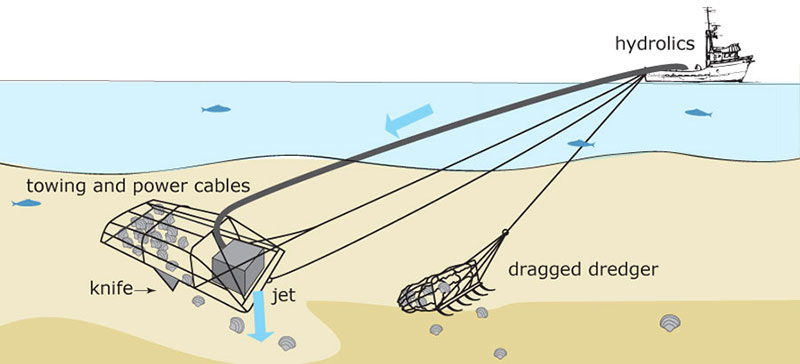
Alternatives
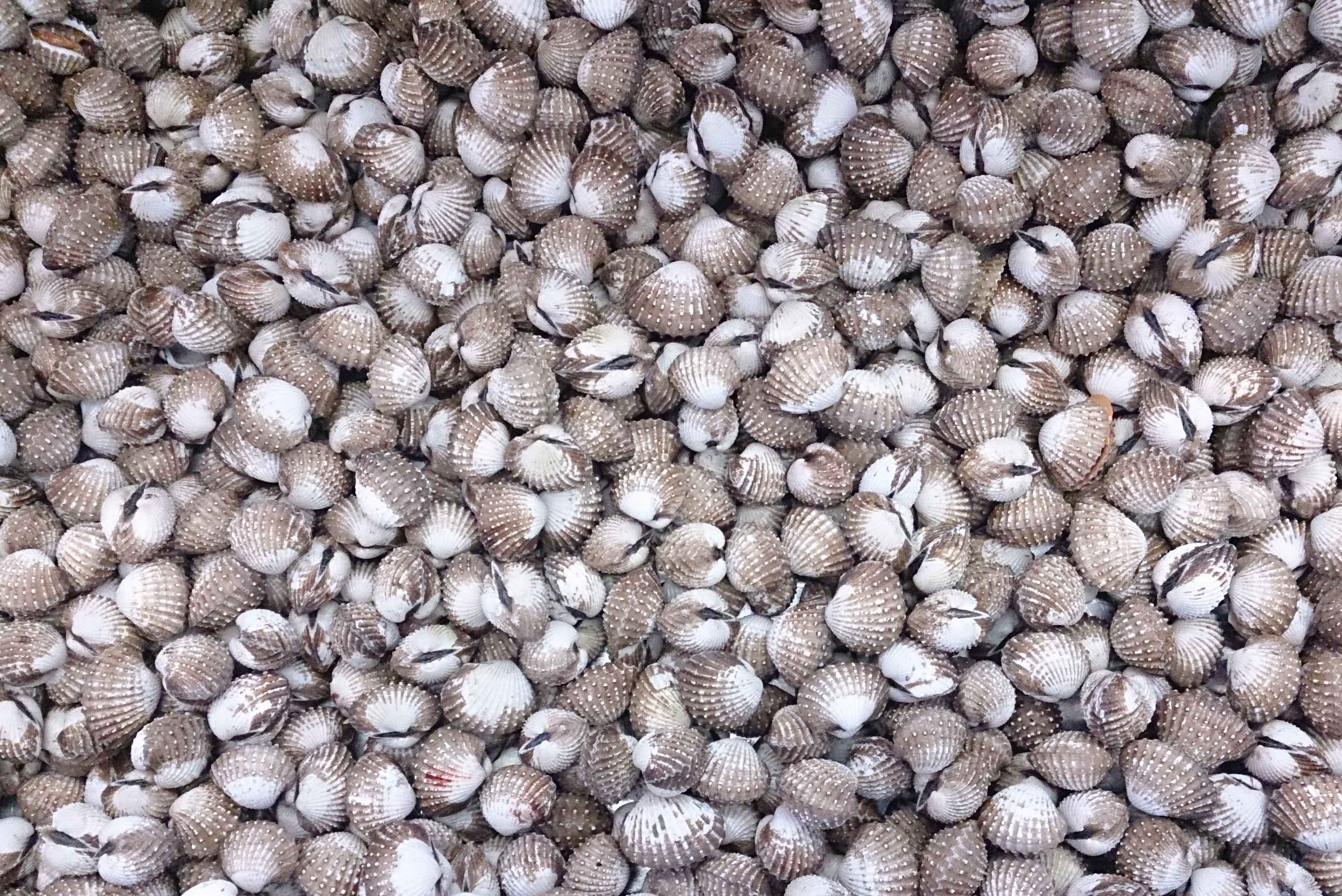 If you enjoy cockles and you want to eat them with a clear consciences, try to buy hand- picked cockles from your local fishmonger or the fish counter in your supermarket. Since cockles are a high quality product from our own Irish beaches, there is no need to buy imported produce.
If you enjoy cockles and you want to eat them with a clear consciences, try to buy hand- picked cockles from your local fishmonger or the fish counter in your supermarket. Since cockles are a high quality product from our own Irish beaches, there is no need to buy imported produce.
Alternatives are blue mussels (cheaper and more sustainable), clams or surf clams (Spisula solida) (same affordability and lower sustainability rating) and oysters (Ostrea edulis) (more expensive, but more sustainable).
Cockles and Mussels in the Marine Food Pyramid
